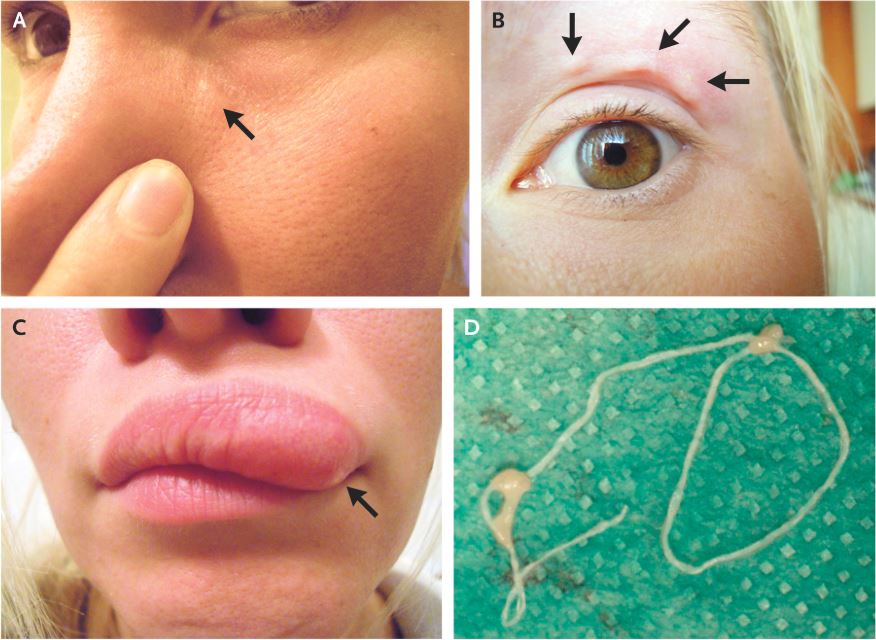A Russian woman went to the ophthalmologist after she noticed some lumps on her face — lumps that turned out to be a parasitic worm.

The lumps had been there for about two weeks. First, they appeared below the 32-year-old’s left eye. Five days later, the lump had moved to above her left eye. Ten days after that, it was in her upper lip.
She documented the lumps’ movement in a series of selfies.
The lumps occasionally caused an itching or burning sensation, according to a case report in the New England Journal of Medicine, but otherwise weren’t painful or causing any other symptoms.
“A physical examination showed a superficial moving oblong nodule at the left upper eyelid,” reads the case report. It was “fixed with forceps” and removed surgically.
It turned out to be a parasitic worm – Dirofilaria repens – that the woman likely caught from mosquito bites she got while visiting a rural area outside Moscow. The patient recovered completely once the worm was out.

Get weekly health news
According to the Centres for Disease Control and Prevention, Dirofilaria are long, thin parasitic roundworms that infect a variety of mammals, including humans on occasion. Dogs, foxes and wolves are more common hosts.
A related worm species is known as “heartworm” in dogs. The particular worm species that infected this woman isn’t found in North America, but similar species are.
Mosquitoes carry the worm’s larvae from animal to animal. In people, it usually causes lumps under the skin, like this woman in Russia reported. However, according to the CDC, the worms aren’t able to reproduce in humans, so they can’t be spread between people.
A 2015 study in the International Journal of Infectious Diseases found records of 1,272 cases of infection in Russia and Belarus between January 1997 and June 2013.



Comments